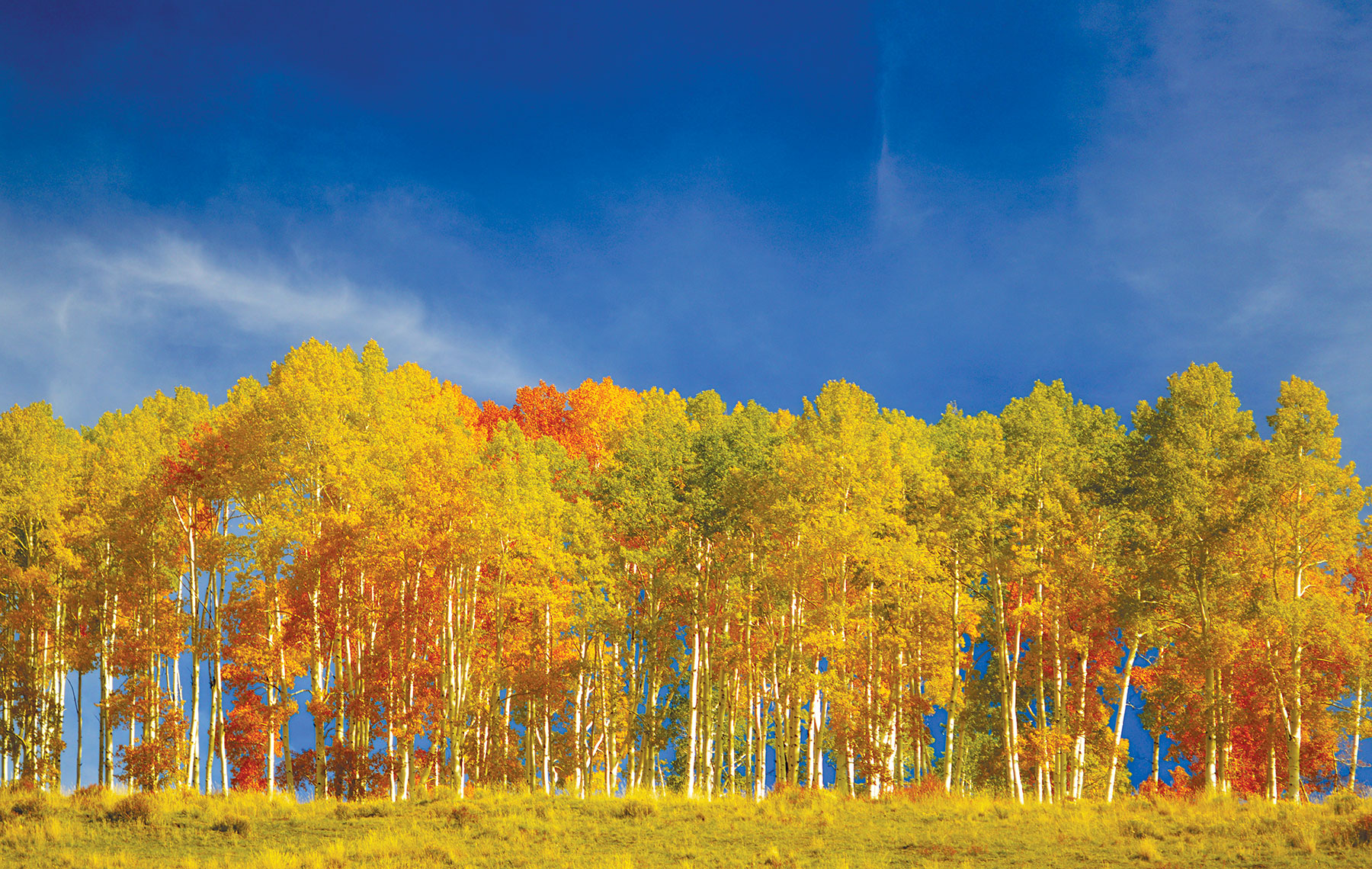
My first memory of Tisha b’Av is from Camp Ramah, just outside Santa Barbara, during the summer after third grade. I was a precocious 7-year-old in “edah aleph” (group one, the youngest class of campers). Our edah worked together to fashion a beautiful outdoor beit knesset (synagogue) beneath a sprawling oak tree, with custom-painted benches and our artwork hanging from the Aron Kodesh (holy ark for the Torah).
One fateful morning, we awoke to find someone had upended our precious prayer space. The Aron was on its side, benches strewn about, our works of art scattered on the ground. I was shocked to the core. Who would do such a thing? Then our counselors explained the destruction in Jerusalem transpiring three millennia earlier on that date. This re-creation of the tragic events of the past created an indelible memory and enabled our bunk to bond during the rebuilding process.
The Jewish people are connected more profoundly than any of us realize. In many ways, we’re like the aspen, one of the largest organisms on earth, famous for decorating mountain ranges with brilliant autumnal radiance. Aspen groves are not collections of disparate entities. They typically are distinct expressions of a single subterranean root system, sometimes stretching more than 100 feet from the parent tree. Deciduous aspens occupy a precarious niche in a coniferous forest, swelling their collective sunshine-yellow glory wherever the colony can obtain enough light. Similarly, the Jewish people are an interconnected family weathering the storms of history, shining the light of peace, love and innovation into the world whenever given the chance. The fires of the destruction of Jerusalem, European pogroms or the Holocaust may rage, but they cannot extinguish the spark animating the collective Jewish soul. We all feel the pain of our fellow Jew because in essence, we are one entity.
The fires of the destruction of Jerusalem, European pogroms or the Holocaust may rage, but they cannot extinguish the spark animating the collective Jewish soul.
Tisha b’Av is hard on even the hardiest individuals. In the waning hours of the holiday, everyone is disheveled and drained. Jewish law stipulates we can’t don tallit and tefillin until the sun is about to set, having been denied the glory of these crowns earlier in the day. We lumber into a Mincha minyan, where we are comforted by the words of divine forgiveness in the Torah reading, which depicts the aftermath of the sin of the Golden Calf. Then in the haftarah, the prophet Isaiah proclaims: “For you shall go out with joy, and be led forth with peace; the mountains and the hills shall break forth before you into singing, and all the trees of the field shall clap their hands.” Even when all seems lost, God is with us, guiding us and giving us hope. Even on this most mournful day, we must serve God with joy. We then utter the Amidah and special insertions with an intensity only possible when ravenous and parched, poignantly aware of one’s mortality.
Tisha b’Av is the saddest day of the year for those steeped in the joy of Judaism. Our collective primal scream echoes throughout history like rolling thunder from the original lightning bolt of destruction, the obliteration of our faith by the spies in the desert. Even at the nadir of our joy continuum, there is a kernel of hope. By the end of the fast, we teeter on shaky legs, ashen-faced and cotton-mouthed. Finally, at the conclusion of Ma’ariv services, we drink delicious gulps of water and step outside the synagogue to celebrate the end of the three-week mourning period with Kiddush Levana (Blessing the New Moon), dancing together in the darkness.
After writing this article, I did an online search for “aspen tree poetry” and discovered a lovely poem by Monica Sharman. I was amazed to see that the biblical passage she quoted was the aforementioned verse from the fast day reading.
Clapping Aspen
In the rising wind of a coming dust storm a mini-stand of aspen planted between
the heron pond and the stucco home made some noise; they say it’s
“quaking.” But that name makes one think of timid fear. Listen like
a musician, with the psalter’s ear, and hear, instead, the sound of applause:
For you shall go out in joy and be led forth in peace; the mountains and the hills before you
shall break forth into singing, and all the trees of the field shall clap their hands.
(Isaiah 55:12)
May we continue to dance together like aspen trees shimmering in a gentle alpine breeze. May our unity be as self-evident as the aspen’s subterranean inter-connectedness. May our miraculous survival mimic that of the age-old grove of this hearty species, with roots so deeply intertwined, it can withstand the heat of any conflagration. May we bring life, love, peace and the awareness of the Creator to all nations.
Sam Glaser is a Los Angeles-based performer, composer, producer and author. He has released 25 CDs of his music, and his book “The Joy of Judaism” is available on Amazon. Join him for a weekly hour of study at 7:30 p.m. PST Wednesdays. Meeting ID: 71646005392. A version of this story appeared on sdjewishworld.com.























 More news and opinions than at a Shabbat dinner, right in your inbox.
More news and opinions than at a Shabbat dinner, right in your inbox.